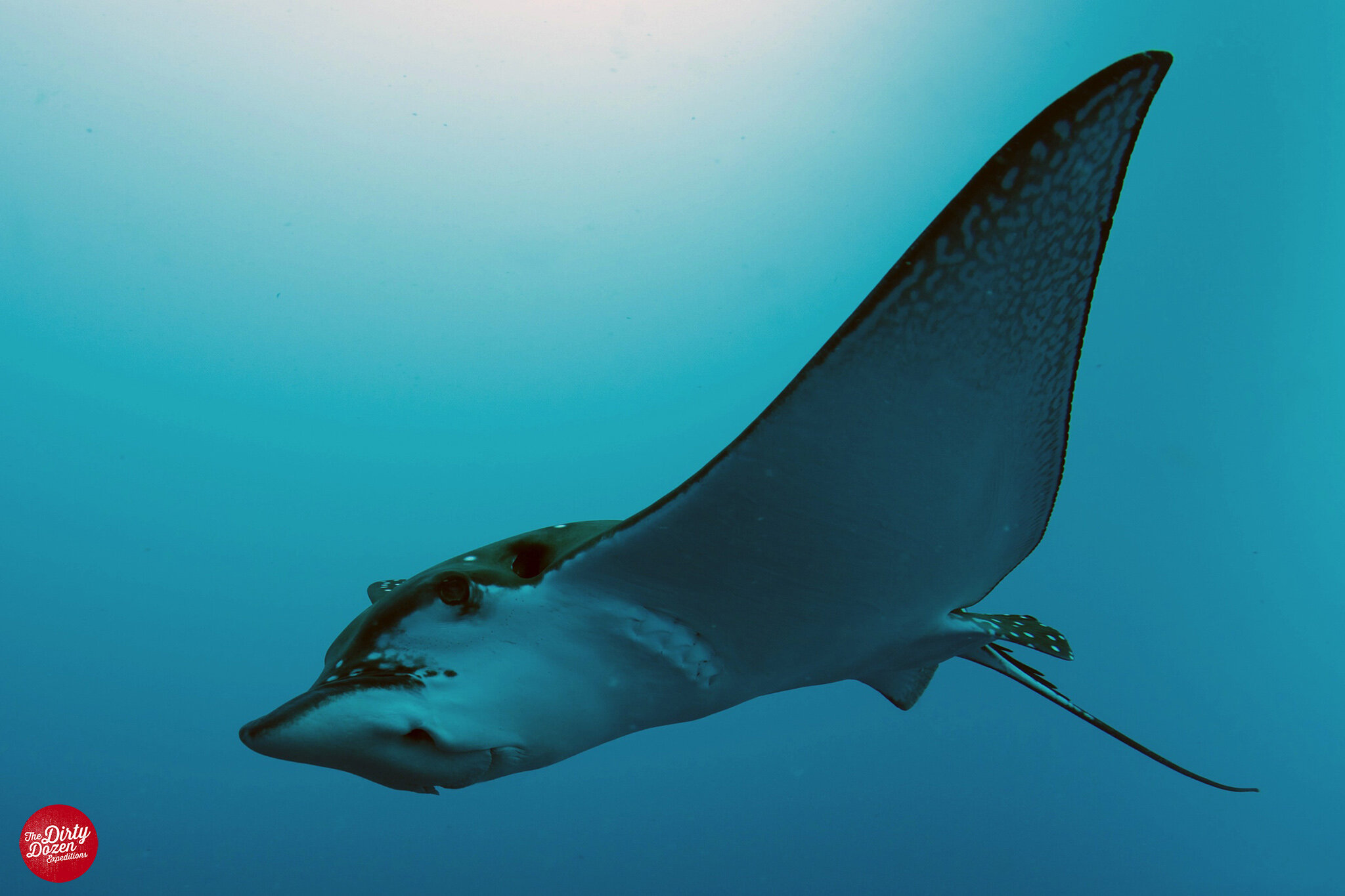What is the one thing that people think about when they hear anything related to Truk Lagoon?
WRECKS!
How can you not? With 50+ known wrecks inside the lagoon, it is easy for that to be the only thing people think and talk about in relation to Truk.
In this article we are going to talk about the squishy things, you know the stuff that grows all over the wrecks, gets in the way of your perfect bow gun photo and makes the deck guns almost unrecognizable. That is right, fish, corals, sharks, turtles, and rays. Truk has it all.
While Truk is best known for wrecks, it also has an abundance of wildlife, which makes it a great place for diving groups with mixed interests. You don’t have to love wrecks to fall in love with Truk.
Because of local laws, there is no fishing allowed on the wrecks, so there are schools of large and small fish in abundance. Coupled with the stunning coral formations, the wrecks are transformed into healthy and beautiful reefs. Some of the most popular wrecks deliver two dives in one, an amazing reef and wildlife experience, followed by a unique and world-class wreck..
The Fujikawa Maru is easily one of the most dived and best-known wrecks in all of Truk. It is famous for the planes in its cargo hold, and R2D2. What is often unsaid though is that it usually has a large school of fish near the bow. It is easy to find large snappers swimming about the wreck and the masts, which used to stick out of the water, are covered in hard and soft corals.
Occasionally, there is a large school of glassfish swimming around this wreck, making it impossible to see past the diver in front of you given the number of fish. If a diver is lucky, they could find a leopard shark, marble ray or a shovelnose ray lying on the sand, commonly off the bow.
The Kensho Maru has a marvelous engine room and is the one wreck where I most often see spotted eagle rays. There is a cleaning station near the bow gun and if you hang around for a bit there is a very high chance that you will see a group swim by.
Divers can spend the entire dive outside the Heian Maru looking at the coral reef that now covers the starboard side of the vessel. The ship is 411.6ft long, or 125.5m, and nearly all of it is covered in hard corals with fish, turtles, eels, and more swimming around.
Down at the screws, you can come across Moorish idols. While swimming the length of the ship, I always tell guests to keep an eye out for octopus, and often we find our celaphapod!
The Shinkoku Maru consistently ranks as one of the lagoon’s best night dives, if not the world. This wreck is overgrown with soft and hard corals, has schools of fish in and outside of the wreck, consistently has sharks and even dolphins patrolling its sides. Off its bow in the sand, divers can routinely find large marble rays.
The map puffer fish is a very common sight, as are multiple kinds of clownfish, eels, and turtles. This wreck makes for an amazing night dive during which divers can find sleeping turtles, vibrant corals, as well as snapper or two as you use your dive light to assist them with finding dinner.
The Fumitsuki is the only destroyer within recreational limits in Truk. On this wreck, it is not uncommon to find nudibranch crawling over the decks, and larger schools of brightly colored fish and sharks swimming around its perimeter.
Off the wreck, you can see shovelnose rays swimming around just within the visible range.
The Sankisan Maru, which was blown in half, is best known for its small multi-coloured glass bottles and a cargo hold full of various gun ammunition. It also has a lot to offer in the way of wildlife.
In the debris field, deck, and cargo holds, it is easy to find various kinds of groupers, parrotfish, and snappers.
Occasionally schools of glassfish will fill the forward area, it is a great deal of fun to slowly swim through the school as they ease out of your way revealing more of the wreckage.
Another enjoyable part about this dive is the safety stop. It is one of the few wrecks where you can enjoy the coral growth while waiting for the time to pass, and if you keep an eye open you can usually find a great barracuda checking you out.
Even the airplanes are covered in coral growth, and therefore, wildlife. The Betty Bomber, is a beautiful small wreck. The inside of it looks like it was painted with a paintball gun, with splotches of reds, oranges, yellows, and some purple sponges growing on the thin aluminium walls. There is a massive school of glassfish in residence, their movement tantalizingly revealing more details as you proceed around the plane.
So, whether you are a diver that prefers the squishy things or the hard things under the water’s surface, Truk has it all - we here at the Dirty Dozen would love to show you.
Join us in January 2022 on our Recreational trip with Andy Torbet or Technical charter with Jill Heinerth, we have a couple of spots left.
Request more information by filling out a form submission at the bottom of this page.
About the Author
I am Tarrant Dunford, I have been swimming before I could walk, and scuba diving for over half my life now. I am a lover of history, which is why wreck diving holds a very special place in my heart.
I spent an amazing 14 months, over 550 dives in Truk taking people through its wrecks. Here, I met Aron Arngrimsson when he was running his first Dirty Dozen trip and later got to see how he did it, while I was working on Truk Master in Bikini Atoll.
My time in Truk just amplified my love for wrecks, and I will talk about them to anyone that wants to listen, and even to those that do not.
Photography by Jill Heinerth, Steve Jones, Marissa Eckert, Martin Cridge, Aron Arngrimsson and Jesper Kjøller






















